Hazelburn is one of three brands produced by the Springbank distillery in Campbeltown on the southwestern coast of Scotland’s mainland. Once a major center of whisky production, Campbeltown today only boasts three surviving distilleries. Springbank’s primary product (Springbank label) is two-and-a-half-ish-times distilled and mildly peated. Its Longrow malt is double-distilled and fully peated (it’s often compared to similar Islay malts). Hazelburn, however, is triple-distilled and unpeated. This makes it very similar to Lowlander Auchentoshan and a few Irish triple-distilled single malts and single pot still whiskies. The triple distillation yields a fruitier, lighter-weight malt by stripping away some of the heavier alcohols.
Hazelburn, like the rest of Springbank’s lineup, is not chill-filtered and has no added coloring. It is bottled at 46% ABV. Unfortunately, Hazelburn 12 retails for $90 or so in the US (!!) apparently due to unusual markups from importers or distributors (see the comments below). If you’re interested in Hazelburn, I suggest ordering from the UK as part of a large order (to spread the shipping cost across multiple bottles), and pay closer to $55, if you can find it in stock.
Yes, I lifted much of this prose from my Hazelburn 8-year review. Sue me, it’s the holidays and I’m short on time.
Nose: White pepper, honey, and mild floral funkiness that almost smells like peat. The funky note is just potent enough to add complexity in the form of a floral spike and a citrus twist to an otherwise baseline malt profile: honey, caramel, plain oak. A rest in the glass allows a pear note to develop.
Palate: Medium, syrupy body. Delectable – a striking balance between green apple / lemon-lime tartness and oaky, brown-sugar flecked sweet malt. The whole is underlain by a murky, dusty complexity. A whisky to contemplate.
Finish: Medium-long. First, piney floral notes give way to lemon zest and then not-quite-bitter oaky tannin. Not as lingering as a peated malt, but also fades without bitterness.
With Water: A few drops of water amp up the vanilla notes, adding a sweet “cream soda” element to both the aroma and palate. I suggest trying without water first, and then witness the change that occurs with a few drops.
Overall: Whereas Hazelburn 8-year betrays its youth with grassy and acerbic notes and a lightness caused more by lack of development than the vaunted triple distillation (Redbreast is triple-distilled, remember), Hazelburn 12 seems to have come into its own. It has funky, oily notes that lovers of Springbank will know well, but paired with honey and vanilla and pear instead of peat. A pleasant, floral-forward malt with a deep complexity. No part of the whisky overwhelms, and although Hazelburn is unpeated, I would be unsurprised to find that some of the process water runs through peat bogs. That, or Springbank’s hands-on whiskymaking process is responsible for some of those fungal/oily notes. If you’re not quite a peat fan but want something more from your 12 year-old single malt than the usual Speysiders can offer, give Hazelburn a shot. The price in the US alone downgrades this from a “Must Try” to a “Recommended”, but if you are able to get a bottle from the UK, $55 is a very reasonable price.


About The Distillery
Springbank is a composite of rarities. It is one of the very few distilleries that performs the entire distillation process from malting on-site (its own floor maltings) to bottling in its private bottling plant. In fact, it is the only fully self-sufficient distillery in Scotland. Located in Campbeltown on the lyrical Mull of Kintyre, it is also one of the few surviving distilleries (of three, with Glen Scotia and Glengyle) from a once-great region of Scotch distillation. In 1887 there were 21 distilleries in Campbeltown, and it was sometimes called “The Whisky City.” Hard times and a self-perpetrated degradation in quality (and thence, reputation) during the American period of Prohibition scoured the region, putting most distillers out of business.Springbank claims that hand-turned floor maltings (as opposed to pneumatic or machine-aerated commercial maltings), while labor-intensive, yield a malt that is better because it germinates more slowly. The distillery uses traditional worm tubs, a cast-iron mash tun, and employs mechanical ‘rummagers’ (to prevent a buildup of burnt deposits) in the copper stills, which are heated with a combination of steam and direct oil fire. Springbank uses three stills to create a 2.8-time (not triple) distillation. Now hold on, because this math is tricky: The first “wash” distillation produces so-called “low wines”, which are around 20% alcohol. A second distillation produces an intermediate distillate, which is in the neighborhood of 35% alcohol. A third still is charged with a solution of 80% of this double-distillate and 20% of the “low wines,” and a third distillation is performed. Thus, in the final spirit, around 80% of the volume has been triple-distilled, while around 20% of the volume has been double-distilled. Hence, 2.8x distillation. Phew! For a fantastic and in-depth guided tour of Springbank distillery, be sure to check out Ralfy’s visit (scroll down).
Springbank also makes Longrow (a peated malt) and (new in 2006) Hazelburn (unpeated, truly triple-distilled). These, along with the distillery’s flagship Springbank bottlings, are all non-chill-filtered, have no caramel coloring, and are reduced to bottling strength on-site with the same water used to produce the whisky. The water, like all Campbeltown whiskies, comes from the Crosshill Loch in the hills above the town, and is supplemented by a private well from a borehole drilled deep into the rock beneath the town. Note that the Springbank “CV” bottling, which is at a similar price-point, is purportedly a vatting of 6, 8, and 12 year-old malts (unverified), from different barrel finishes.
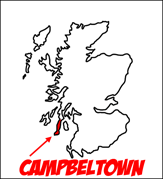


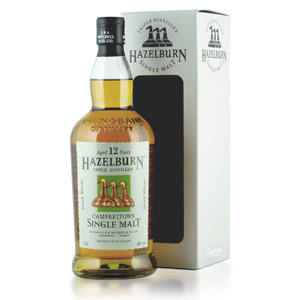
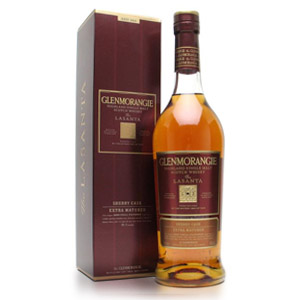
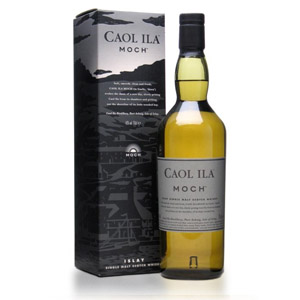
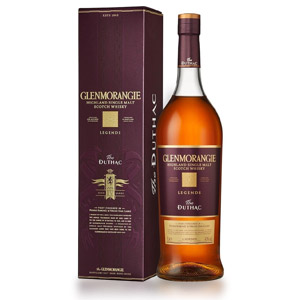
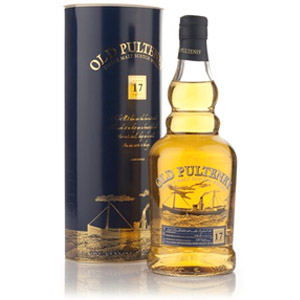

For full disclosure: unlike many others I don’t fall head-over-heels backward to praise the glory that is Springbank. I find most of their malts to contain a certain ‘nuttiness’ characteristic that simply doesn’t sit well with my personal senses. For this same reason I don’t often seek out Bruichladdich nor Glenfarclas, two other malts that I tend to find off-putting. With that caveat, I have enjoyed every Longrow I’ve sampled (and have a bottle of the 11 year Rundlets and Kilderkins stashed in my bar for a special day), but the Springbanks and this reviewed Hazelburn simply don’t float my boat. I find the Hazelburn 12 to be closer to an Irish whiskey than a Lowland one. I like Auchentoshan due to its unique green apple note. Hazelburn is no Auchentoshan. If you’re a Redbreast 12 fan, maybe give H12 a go (at almost double the price, as noted), but I suspect many will find themselves disappointed with the experience and at the value-for-money ratio.
DJ, I agree with your sentiments – if you don’t love Springbank you will definitely find this Hazelburn a major disappointment for the money. As a matter of personal taste, I enjoy the odd funky ‘nuttiness’ in Springbank/Hazelburn which – like you – I find in Redbreast as well. As much as I’m usually a stickler for QPR on whiskies, for some reason I tend to give Springbank a pass. This is not just due to its particular nature, but also for its rustic way of operating. When modern corporate whiskies increase in price, I feel cheated. When Springbank is $100, I feel like my money is going to a “good place”. That may be illogical, but then I feel all whisky drinkers deserve a little bit of eccentricity. 😉 Thanks for the warning – if a reader is making a decision on this bottle and DJ’s comment rings true: don’t buy. Cheers!
Great review! About 2 years into my scotch journey now, Springbank distillery has become current favorite – from both a distiller’s philosophy standpoint (I’m a sucker for the non-corporate sellout with traditional procedures) and a whisky character standpoint. I love the unique funk that accompanies seemingly all Springbank products. We are just now starting to get Hazelburn here. I actually found a 13 year oloroso cask matured for a better deal than the standard 12, so alas I’m taking a sort of backwards route through the line.
Cheers!
I believe that, in the UK, Springbank products aren’t so much more expensive than their peers from other distilleries.
The culprits I’ve always heard identified for the high prices in North America are their importers & distributors, not the charming old-school production methods.
This is good information, and makes me feel like a doofus for not realizing it. For what it’s worth, Hazelburn 12 appears to be sold out everywhere. Hazelburn 10 seems to retail for around $40 (ish) in the UK. I’m going to update this post and some previous ones, but for anyone reading this in the future: I am indeed a doofus, and thought $100 was an appropriate price for this. Buy it from the UK.
Well don’t know about “doofus.”
It’s certainly more satisfying to think your extra dollars are going toward Springbank’s chalkboards & open windows & all the rest, rather than the bottom line at Priess Imports or wherever.
I wanted to thank you for all the effort you put into the blog. It’s useful as a gift buying guide for my brother, who loves having a sip of the liquid flower of Scotland now and then. I also read your blog post about finding values in today’s pricy Scotch market; my brother recommends the following that you have yet to review: Grangestone 12 Single Malt ( Total Wine House Brand; my brother thinks it is Kininvie 12), Cutty Sark Prohibition (loved that it’s bottled at 100 Proof), and Naked Grouse (depending on his mood, he likes it better than Monkey Shoulder). All of these can be yours for less than around 35 George Washingtons. He’s also intrigued by Smokey Joe as a value in peated whisky but hasn’t been able to put his hands on a dram yet.
Happy Holidays to you, and keepexploring and explaining the world of whisky.
Thanks for the comment! I’ll keep an eye out for opportunities to review those… I know I’ve considered Prohibition in the past, and a Total Wine just opened near me. Cheers!
Another great value malt that appears uncovered on this blog is Knappogue Castle 12. Irish single malt, sourced from Bushmills if I’m not mistaken. Usually goes for $30-35. Nice stuff.
Thanks, I think I have a sample in my “Irish pile” of Master of Malt samples, I’ll try to dig it out for the New Year. 🙂 Cheers!
I’m a reader not a writer, but it’s really weak review….
Criticism become constructive when it includes details and suggestions.
This is a really weak comment IMHO